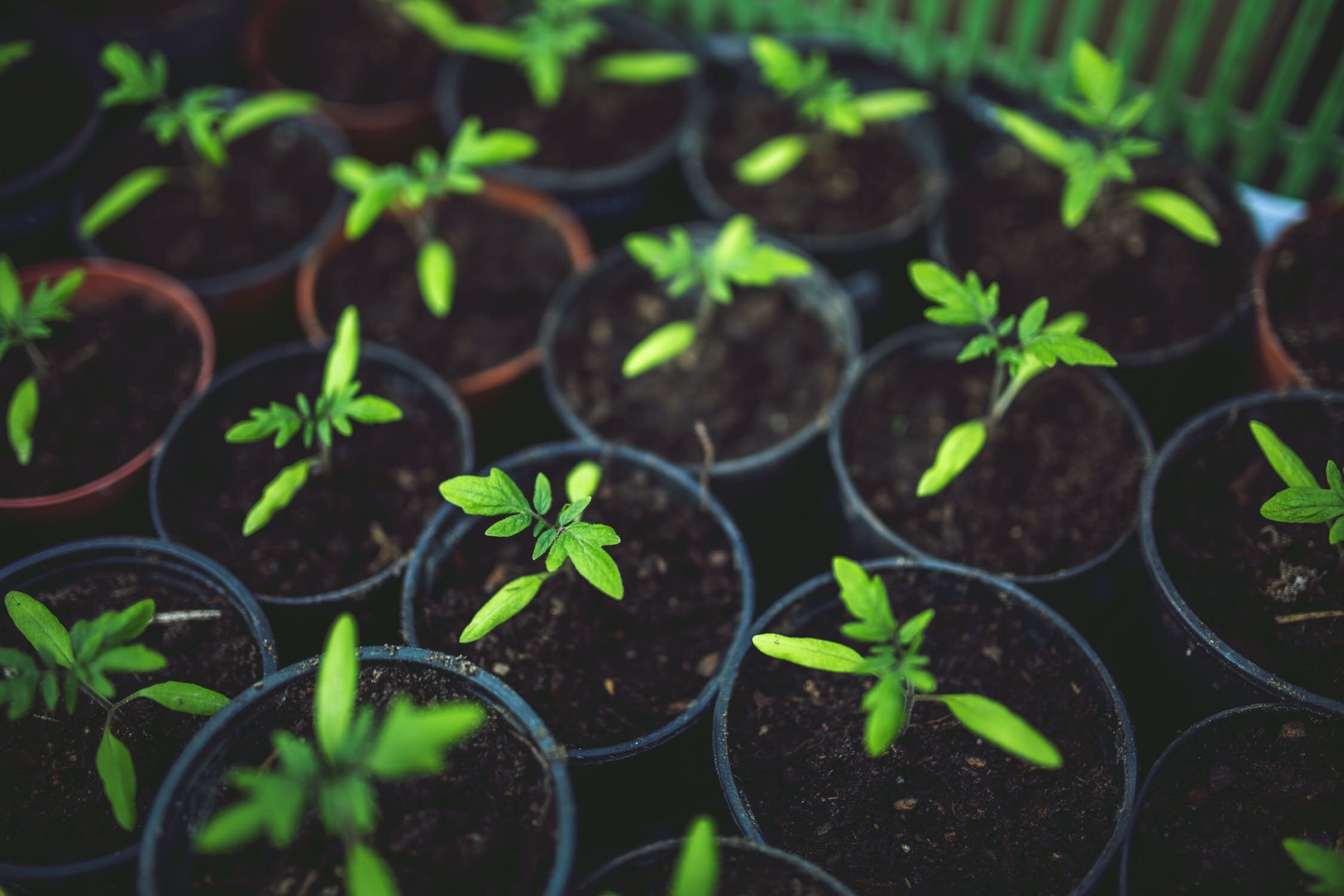How good is your potting soil?
A good potting mix is light and fluffy, holds onto nutrients, drains well—and does not come from a backyard. (Photo source: Pexels)
Acadia Tucker, a regenerative farmer and gardener, has made a name for herself extolling the virtues of cultivating organically rich soil. In her first two gardening books, she names mixing up loamy soil as the first step to cultivating an organic, resilient backyard vegetable garden.
“Those plants took almost no time to die. Basically, they were smothered.”
It was only after she decided to extend her summer crop of tomatoes and peppers by transferring a few into pots that she learned the flip side of the rich, dark earth from her backyard. It’s a terrible match for plants in pots.
“Those plants took almost no time to die,” she says now. The soil was way too rich and dense for her plants to thrive in. “Basically, they were smothered.”
Plants grown in pots have drastically different needs from plants grown in the ground. Potting soil needs to be light and fluffy, hold all the nutrients a plant needs, and drain excess water. Garden soil is heavier, typically containing clay that can make it hard for a potted plant to breathe. “When we’re talking potting soil,” says Tucker, “it’s typically free of soil.”
Left: a dying basil plant. Right: a thriving oregano. A big reason for the difference? The oregano was repotted with mix made by the author.
Tucker, who has written a third book, this time about growing food in pots and containers, tested various types of potting soil to see what works best. Her takeaway: Be picky when it comes to buying commercial potting mixes.
It’s hard to know what’s in store-bought mixes since there’s no regulatory oversight. But they often include peat moss to keep it light and fluffy. What makes this a problem is that peat bogs are what are known as carbon sinks, which do the important job of removing excess carbon dioxide from the atmosphere and storing it underground.
“Can you believe that we’re destroying carbon sinks to fill pots?”
Mining peat bogs releases greenhouse gasses. Not only that, peat moss grows at a very slow rate—about a yard deep every thousand years—which means peat bogs are being harvested far more quickly than they can be replenished. Ninety four percent of England’s bogs have been depleted in the last hundred years, for instance, meaning this valuable resource is increasingly difficult to come by.
“Can you believe that we’re destroying carbon sinks to fill pots?” asks Tucker.
For this reason, Tucker and other eco-gardeners recommend looking for alternatives, including making your own potting mix.
Mix your own potting soil
Blocks of coconut coir, an eco-friendly way to keep potting mix fluffy.
The satisfaction of knowing exactly what goes into potting mix is why Tucker prefers making her own. To keep it fluffy, she uses coconut coir, made from the outer husks of coconut shells, as a peat alternative.
Coir would be produced “whether or not there was a demand for it,” says Tucker. “Better to use in potting mixes than see it end up unused in a landfill.” Using coir includes the environmental cost of shipping it from coconut farms around the world, but it’s still more sustainable than peat-based soils.
To make five gallons of potting soil, combine:
A) 2.5 gallons of coconut coir. Coir is usually sold in compressed bricks that fluff up after a soaking. A 1.5 pound brick is equal to just over 2.5 gallons. It’s available online if you can’t find it in local gardening store.
B) 1.25 gallons of organic compost. Buy it, or make your own. Compost adds vital nutrients to potting mix, and gets your potted vegetables, fruits, and herbs off to a strong start.
Adding pumice stone to your mix helps prevent it from becoming soggy.
C) 1.25 gallons of pumice stone. Pumice, available at most garden stores in a range of sizes, make it easy for water to drain.
Combine ingredients in a plastic tub, cover it, and store in a dry place. The recipe can be reduced by halves or quarters for easier storage.
Source: Tiny Victory Gardens: Growing food without a yard
Buy potting soil
Picking up a bag of mix at a local gardening center is the most convenient option for many, especially if you’re tight on space.
Look for a seal of approval from the Organic Materials Review Institute (OMRI), a non-profit that independently reviews and lists organic products. If a potting soil is OMRI-certified, it’s safe and sustainable enough for your gardening use.
Maintaining potting soil is just as important as starting with the right mix. “You have to care for the soil,” says Tucker. She adds helpings of compost to her potted vegetables and fruits every year, and covers potting soil with mulch to conserve water. Additional ways of boosting potting mixes that won’t take up much space: adding liquid compost tea or Effective Microbes (EM1), both of which are available at plant nurseries.
Tucker recommends container gardening to people who want to grow food year round. She also believes it can make the act of growing food more approachable. “Container gardening is a gateway to something bigger,” she says. ”A way to build your confidence, and grow even more food. In pots, backyards—wherever works for you.”
Lizzie Kalvesmaki is a Stone Pier Press News Fellow based in Northampton, MA.












